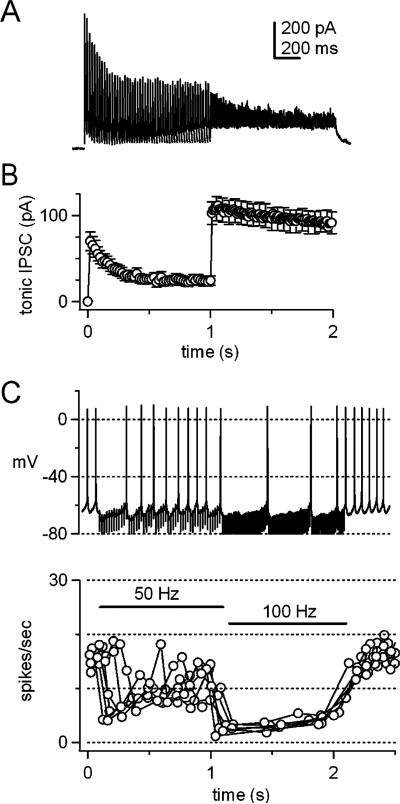Fig. 2.
Short-term synaptic depression and the efficacy of inhibition. a IPSCs in a cerebellar nuclear neuron in a cerebellar brain slice from a ~2-week-old mouse. Currents were evoked at –40 mV by stimulating Purkinje axons for 1-s at 50 Hz followed by a 1-s at 100 Hz; 31°C, ECl=–70 mV. Peak IPSC amplitudes depress by about 50% during the 50-Hz train and depression is slightly increased during the 100-Hz train. b The tonic IPSC, defined as the inhibitory synaptic current remaining just before the subsequent stimulation, during the 50-Hz and 100-Hz trains. Mean of 25 cells. c Spontaneous action potentials recorded in a cerebellar nuclear neuron with no holding current subjected to IPSPs evoked at 50 Hz (1 s) followed by 100 Hz (1 s). The firing rate is effectively decreased before the synaptic current has depressed (at the beginning of the 50-Hz train) or when the tonic IPSC is increased by rapid stimulation (during the 100-Hz train). d Instantaneous firing rate (spikes/s) for the cell in c, over six trials of identical stimuli. Data from [39], reproduced with permission

